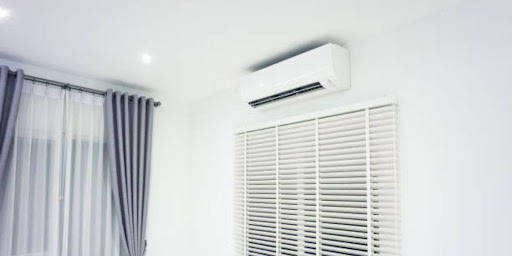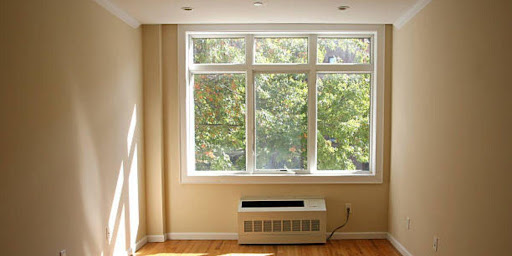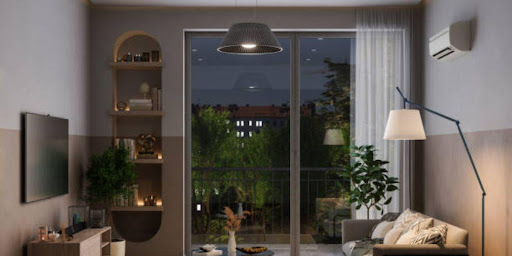Power Articles
Industry Elevating Content
Maximizing Ventilation - Strategies for Effective Window Placement

PowerArticles
Sept. 4th, 2023
In window and door installation, achieving optimal ventilation is a paramount objective, directly influencing indoor air quality and occupant comfort. In this article, we delve into the art and science of “Maximizing Ventilation: Strategies for Effective Window Placement” – a critical consideration for window and door installation companies. By exploring the principles of strategic window placement, we aim to equip these businesses with the knowledge and insights necessary to enhance their services, optimize airflow dynamics, and ultimately elevate the well-being of the spaces they touch.
Understanding Ventilation
Ventilation refers to the process of exchanging indoor and outdoor air within a building to maintain air quality and remove pollutants. It involves the circulation of fresh air, which helps regulate temperature, control humidity, and dilute indoor pollutants, ensuring a healthier and more comfortable indoor environment.
Health Benefits of Good Indoor Air Quality
Effective ventilation is crucial for maintaining good indoor air quality, which has a direct impact on occupants’ health. Properly ventilated spaces reduce the concentration of harmful airborne contaminants such as allergens, volatile organic compounds (VOCs), and pathogens. This leads to improved respiratory health, decreased allergy symptoms, and a lower risk of respiratory illnesses, ultimately enhancing the well-being of building occupants.
The Connection Between Window Placement and Ventilation
Strategically placing windows plays a pivotal role in optimizing ventilation. Well-placed windows facilitate the entry of fresh outdoor air and create natural airflow patterns that can reduce the need for mechanical ventilation systems. Window placement should be carefully considered during the design and installation process to maximize airflow, enhance indoor air quality, and promote energy efficiency. Understanding this connection is essential for companies specializing in window and door installation, as it ensures their clients can enjoy the full benefits of effective ventilation in their buildings.

Factors Influencing Window Placement
Windows play a pivotal role in maximizing ventilation within buildings, ensuring comfort and promoting overall well-being. To optimize window placement, companies that install windows and doors should consider several crucial factors:
A. Building orientation and layout
Impact on natural ventilation opportunities
The orientation and layout of a building significantly affect the potential for natural ventilation. South-facing windows, for instance, receive more sunlight throughout the day, while cross-ventilation can be achieved by strategically placing windows on opposite sides. Companies must evaluate the building’s orientation to harness prevailing winds and solar exposure for effective ventilation.
B. Environmental considerations
Climate and weather patterns
The local climate plays a vital role in window placement. In regions with extreme temperatures, like hot summers or cold winters, windows should be strategically positioned to minimize heat gain or loss. This helps in reducing energy consumption for heating and cooling.
Outdoor air quality
Consider the air quality in the surrounding area. Installing windows near sources of pollution or in high-traffic zones may compromise indoor air quality. Prioritize locations that facilitate the inflow of fresh, clean air, enhancing occupants’ health and well-being.
C. Building function and occupancy
Residential vs. commercial considerations
The function and occupancy of the building dictate window placement. In residential settings, prioritize views, natural light, and cross-ventilation for increased comfort. For commercial spaces, consider factors like privacy, security, and energy efficiency, which may require a different approach to window placement.
D. Aesthetic and design preferences
Balancing functionality with aesthetics
Aesthetic preferences are essential but should be balanced with functional considerations. Collaborate with architects and designers to create a harmonious blend of beauty and utility in window placement. Explore innovative design solutions that cater to both form and function.

Strategies for Effective Window Placement
Strategies for Effective Window Placement is crucial for companies specializing in window and door installation. Properly positioned windows can significantly enhance a building’s airflow and comfort, while also complying with legal regulations.
Assessment of Building Needs
Conducting a Thorough Ventilation Needs Analysis: Before installing windows, assess the building’s unique ventilation requirements. Factors such as occupancy, climate, and purpose should guide window placement decisions.
Proper Positioning of Windows
Maximizing Exposure to Prevailing Winds: Locate windows to capture prevailing winds, facilitating natural cross-ventilation. Understanding local wind patterns is crucial for effective placement.
Avoiding Obstructions and Barriers: Ensure that windows remain unobstructed by neighboring buildings, trees, or other structures, allowing for unimpeded airflow.
Sizing and Type of Windows
Choosing the Right Window Size and Style for Optimal Ventilation: Select windows that match the building’s size and purpose. Casement or awning windows may be more effective for ventilation compared to fixed windows.
Window Placement in Different Building Types
Residential Buildings: Position windows strategically in bedrooms and living areas to provide cross-ventilation and natural light.
Commercial Spaces: Consider the specific needs of commercial spaces, such as offices or restaurants, to optimize ventilation and customer comfort.
Energy Efficiency Considerations
Balancing Ventilation with Energy Conservation: Implement energy-efficient window technologies like Low-E coatings or double-glazing to maintain comfort while minimizing energy loss. Consider using operable windows equipped with sensors for intelligent ventilation control.
Compliance with Building Codes and Regulations
Legal Requirements for Window Placement: Familiarize yourself with local building codes and regulations regarding window placement, egress requirements, and safety standards. Ensure that installations adhere to these guidelines to avoid legal issues and penalties.

Technology and Tools
In the realm of window and door installation, staying abreast of cutting-edge technology and utilizing advanced tools is paramount to optimizing ventilation strategies. Here, we delve into the key facets of technology and tools that can revolutionize the window placement process for companies in the industry.
Modern tools for assessing ventilation needs
To accurately determine ventilation requirements for a given space, companies can leverage modern tools like anemometers and airflow meters. These devices measure air velocity and quantity, aiding in the calculation of necessary ventilation rates. Such data-driven insights ensure that window placement decisions align with specific ventilation needs, fostering optimal indoor air quality.
Simulation software for window placement analysis
Simulation software has emerged as a game-changer for window and door companies. These programs employ computational fluid dynamics (CFD) to simulate airflow within a space. By inputting architectural blueprints and environmental conditions, businesses can virtually test various window placement scenarios. This advanced analysis empowers companies to make informed decisions, fine-tuning window placement to maximize ventilation efficiency.
Innovative window technologies
Incorporating innovative window technologies, such as smart glass and electrochromic windows, enhances ventilation capabilities. Smart glass can automatically adjust its tint to control sunlight and heat, optimizing comfort and energy efficiency. Electrochromic windows allow users to modify tint levels, balancing privacy and ventilation according to preferences. Integrating these technologies into installations elevates the functionality and appeal of windows.
Smart solutions for automated ventilation control
Automation is the future of ventilation control. IoT-enabled systems can monitor indoor air quality and adjust windows accordingly. Companies can install sensors that detect pollutants or CO2 levels and trigger window openings or closures. These smart solutions maximize ventilation and contribute to energy savings and sustainability efforts.

Conclusion
In conclusion, the strategic placement of windows plays a pivotal role in maximizing ventilation within commercial spaces, offering numerous benefits to both occupants and businesses. Companies specializing in window and door installation should prioritize thoughtful design and placement to enhance indoor air quality, energy efficiency, and overall comfort.
By considering factors such as prevailing winds, building orientation, and the incorporation of operable windows, businesses can create healthier and more appealing environments while reducing the reliance on mechanical ventilation systems. Embracing these strategies contributes to improved well-being and aligns with sustainability goals, making it a worthwhile investment for clients and the environment.
Published By
PowerArticles
Sept. 4th, 2023